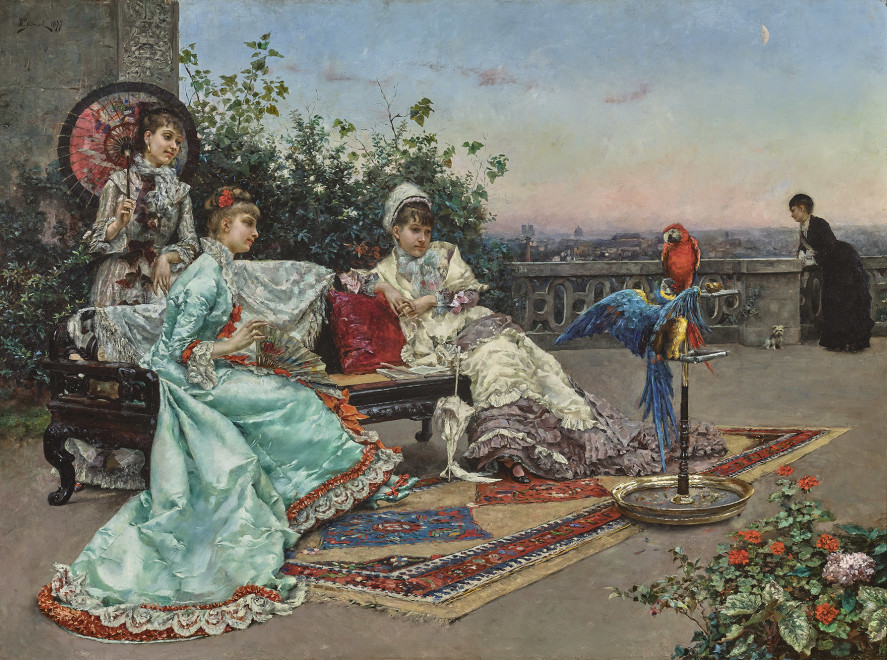Painted in 1877, Twilight on the Terrace is one of Julius Stewart’s earliest recorded works.
Provenance
Goupil & Cie., Paris (no. 12257, acquired directly from the artist as Femmes sur une terrasse)
19 October 1877Fichtenberg (acquired from the above, 8 January 1878 for 6,000 francs)
Goupil & Cie., Paris, 1878 (no. 13005, returned by Fichtenberg)
(possibly Albert) Crosby, Chicago (acquired from the above, October 1878 for 5,000 francs)
Private Collection, Massachusetts
Sale: Boston, Skinner, 21 September 2018, lot 219
Acquired at the above sale by the current owner
Catalogue note
Painted in 1877, Twilight on the Terrace is one of Julius Stewart’s earliest recorded works. It follows a successful return trip to America, where he participated in in the Centennial exhibition in Philadelphia, his very first public showing. He would make his Paris Salon debut in 1878.
Twilight on the Terrace, Paris also marks Stewart’s foray into complex, multifigured compositions featuring the Parisian elite and notable American expats as his models. These grand, often large-scale paintings, reminiscent of artists such as Jean Béraud and especially James Tissot, firmly established his reputation. With a studied realism, Twilight on the Terrace, Paris depicts an elaborate outdoor scene of four society ladies gathered to enjoy a view of Paris from a terrace at sunset. The silhouettes of Notre Dame and the Pantheon can be seen in the distance. One woman leans on the balustrade, possibly anticipating another guest, while the other three are captivated by two colorful parrots, perhaps included as an exotic memento of Stuart’s visit to Cuba, where his father was a landowner. As was his trademark, Stewart’s models wear the latest Parisian fashions, allowing him to show off his technical virtuosity in rendering the elegant silk, satin and delicate lace trim and flounces of their day dresses.
Other features of Twilight on the Terrace, Paris provide an insight into Stewart’s influences. The Oriental rug suggests an unrecorded trip to North Africa or the Middle East and an interest in Orientalism (Stewart had studied in Jean Léon Gérôme’s studio), while the delicate silk fan, the parasol and the black lacquered Chinese sofa embody his strong fascination for Japanism. Not only do these objects represent Stewart’s full immersion in the elegant and fashionable world of Parisian high Society, they also reveal a taste for eclecticism and the exotic, two trends that became immensely popular in Belle-Époque imagery.

